The humble dung beetle may not win any beauty contests in the animal kingdom, but its ecological significance extends far beyond its modest appearance. These remarkable insects, found on every continent except Antarctica, perform a critical yet often overlooked service: they help prevent disease outbreaks by efficiently processing animal waste. As natural waste managers, dung beetles play a pivotal role in maintaining ecosystem health and, by extension, safeguarding human and animal populations from various pathogens. Their relentless work in burying, consuming, and recycling dung contributes significantly to disease control by eliminating breeding grounds for harmful organisms and reducing the spread of parasites. This article explores the fascinating relationship between these industrious insects and disease prevention, highlighting how these tiny ecological engineers contribute to global health security in ways many of us never consider.
The Natural Sanitation Crew: Understanding Dung Beetles

Dung beetles belong to the superfamily Scarabaeoidea, with over 7,000 species identified worldwide that specialize in processing animal excrement. These insects are categorized into three functional groups based on their nesting behaviors: rollers (telecoprids) that form dung into balls and roll them away, tunnelers (paracoprids) that bury dung directly beneath the pat, and dwellers (endocoprids) that live inside the dung pile. Their primary ecological function involves removing dung from the surface of the ground, which they accomplish with remarkable efficiency—in tropical regions, dung beetles can completely remove a fresh cow pat within 48 hours. This rapid waste removal is more than just cleaning; it represents the first line of defense against numerous disease-causing organisms that would otherwise proliferate in untreated animal waste. By quickly eliminating these potential pathogen reservoirs, dung beetles serve as nature’s sanitation crew, working tirelessly to maintain environmental health.
Breaking the Parasite Life Cycle

One of the most significant ways dung beetles prevent disease outbreaks is by disrupting the life cycles of parasitic organisms that depend on animal feces for reproduction and development. Parasites such as roundworms, hookworms, and liver flukes lay eggs in host animals that are then expelled in dung, where they develop into infective stages that can reinfect animals or humans. When dung beetles rapidly bury or consume dung, they effectively remove these parasite eggs and larvae from the environment, preventing them from completing their development. Research has demonstrated that pastures with active dung beetle populations show significantly reduced parasite loads in grazing livestock. A study in Australia found that introducing dung beetles to cattle pastures reduced the survival of gastrointestinal nematode larvae by up to 90%, dramatically decreasing the incidence of parasitic infections in cattle and the associated economic losses for farmers.
Combating Fly-Borne Diseases

Fresh animal dung serves as an ideal breeding ground for various fly species, many of which are vectors for disease transmission. House flies, stable flies, and horn flies can all transmit pathogens causing diseases such as dysentery, cholera, and eye infections in both humans and animals. Dung beetles directly compete with these disease-carrying flies for the dung resource, significantly reducing the flies’ reproductive success. By burying dung or consuming it before fly eggs can develop into larvae, dung beetles substantially reduce fly populations in agricultural and natural settings. A comprehensive study in North America demonstrated that functional dung beetle communities can reduce the emergence of adult flies from cattle dung by up to 95%. This reduction in fly populations translates directly to decreased transmission of fly-borne diseases, particularly in regions where livestock and human populations live in close proximity.
Preventing Water Contamination
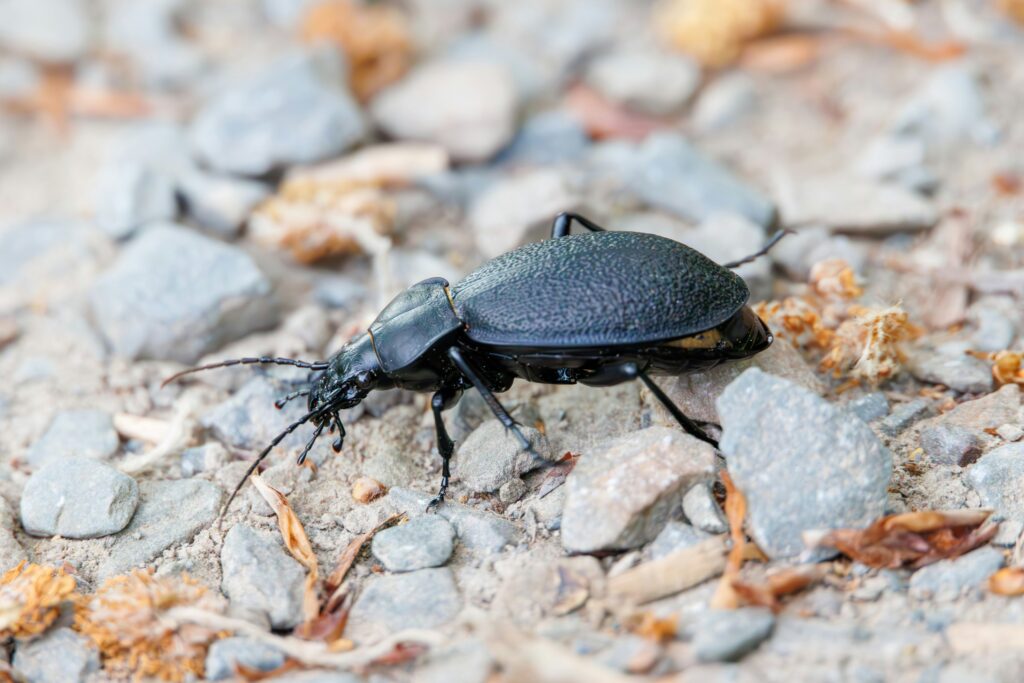
Waterborne disease outbreaks often originate from fecal contamination of water sources, a pathway that dung beetles help block through their waste management activities. When rainfall occurs, unprocessed animal waste on the landscape can be washed into streams, rivers, and other water bodies, carrying pathogens such as Cryptosporidium, Giardia, and E. coli. These microorganisms can cause severe gastrointestinal illnesses in humans and animals that consume the contaminated water. By rapidly removing dung from the surface and burying it in the soil, dung beetles significantly reduce the risk of these pathogens reaching water sources. The tunneling behavior of many dung beetle species also creates channels that increase soil permeability, allowing water to filter through soil layers where many pathogens are naturally removed before reaching groundwater. Research in watershed management has begun to recognize dung beetles as valuable allies in maintaining water quality, particularly in agricultural regions with high livestock densities.
Antibiotic Resistance and Dung Beetles

The rising global concern of antibiotic resistance has brought attention to an unexpected dimension of dung beetle ecology: their potential role in mitigating the spread of antibiotic-resistant bacteria. Livestock treated with antibiotics excrete both unmetabolized antibiotics and resistant bacteria in their dung, creating reservoirs of antibiotic resistance in the environment. Dung beetles may help mitigate this problem through several mechanisms, including the acceleration of dung decomposition, which reduces the time these resistance factors remain viable in the environment. The digestive systems of some dung beetle species have been found to reduce the viability of certain antibiotic-resistant bacterial strains, though research in this area is still developing. Additionally, by reducing fly populations that might otherwise spread resistant bacteria between farms and human settlements, dung beetles indirectly contain the geographic spread of resistance. While not eliminating the problem of antibiotic resistance, dung beetles represent an important ecological factor in managing its environmental dimensions.
Protecting Grazing Livestock from Disease
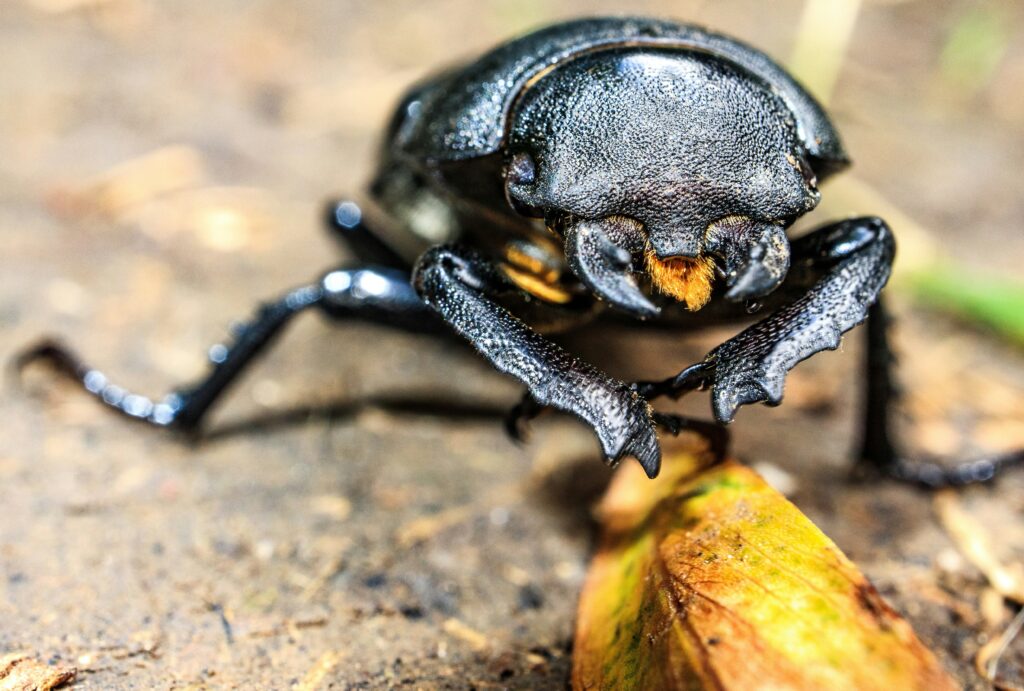
Livestock producers have long recognized the value of dung beetles in maintaining healthy grazing systems and reducing disease pressure in their herds. In pasture environments, animals naturally avoid grazing near their own dung due to instinctive parasite avoidance behaviors, creating “rejection zones” that reduce the efficiency of pasture utilization. Active dung beetle populations quickly remove these dung pats, increasing the effective grazing area and preventing the accumulation of pathogens in heavily used pasture sections. The burial of dung also incorporates nutrients into the soil profile rather than leaving them to volatilize or wash away, promoting healthier pasture growth that can better support livestock immune function. Several studies have documented lower veterinary costs and reduced need for antiparasitic treatments in livestock operations with robust dung beetle activity. Progressive ranchers now actively manage their pastures to support dung beetle populations, recognizing these insects as valuable allies in sustainable livestock health management.
Zoonotic Disease Control

Zoonotic diseases—those that can transmit between animals and humans—represent some of the most concerning public health threats globally, with approximately 60% of emerging infectious diseases originating in animals. Many of these pathogens can be found in animal dung, including dangerous organisms like E. coli O157:H7, Salmonella, and Campylobacter, all of which cause serious gastrointestinal illness in humans. Dung beetles reduce human exposure to these pathogens by removing animal waste from the environment and accelerating its decomposition under conditions that often diminish pathogen survival. The burial of dung also physically separates potential human contact with contaminated material, particularly important in regions with high human-livestock interaction. Public health researchers have begun to recognize the value of functional dung beetle communities as a component of One Health approaches to zoonotic disease management, particularly in rural and agricultural communities where traditional sanitation infrastructure may be limited.
Dung Beetles and Viral Pathogen Reduction
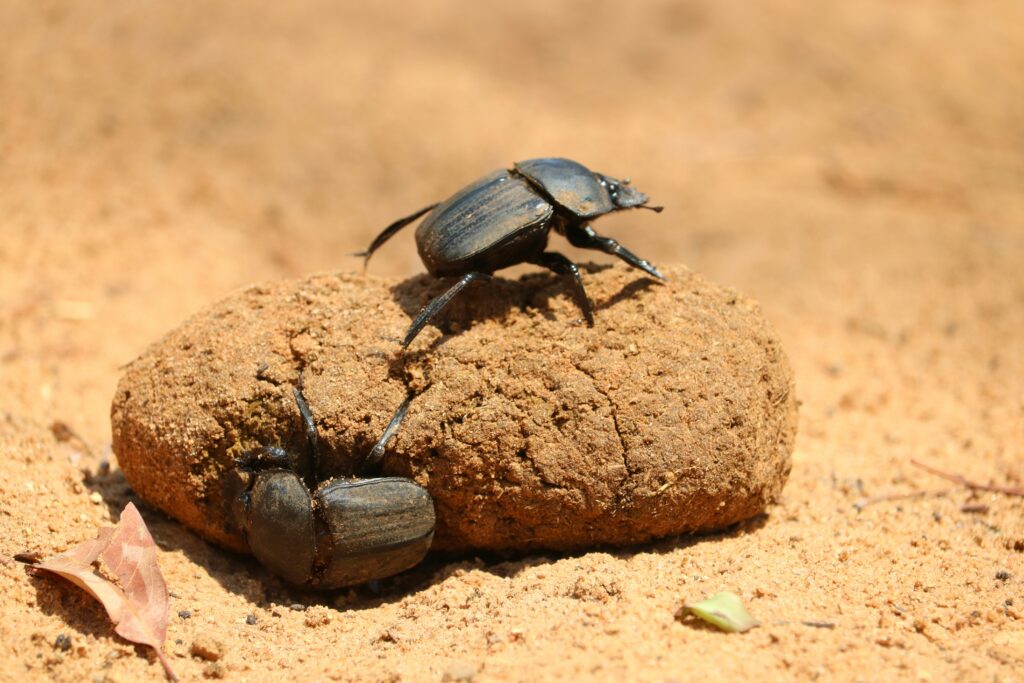
While much research has focused on dung beetles’ effects on bacterial and parasitic pathogens, emerging evidence suggests they may also play a role in reducing environmental viral loads. Many viruses can survive passage through an animal’s digestive system and remain viable in feces for extended periods, creating potential for environmental transmission. The rapid burial and breakdown of dung by beetles exposes these viruses to soil microorganisms that may degrade viral particles, and to environmental conditions less favorable for viral persistence than the surface of a dung pat. In particular, certain enteric viruses that cause gastrointestinal disease in both animals and humans show reduced environmental persistence when dung is processed by beetles. The modification of dung into soil organic matter through beetle activity subjects viruses to complex biogeochemical processes that typically reduce viral loads over time. While this field requires further research, the potential role of dung beetles in mitigating viral environmental reservoirs represents another dimension of their disease prevention services.
Biodiversity Loss and Disease Emergence
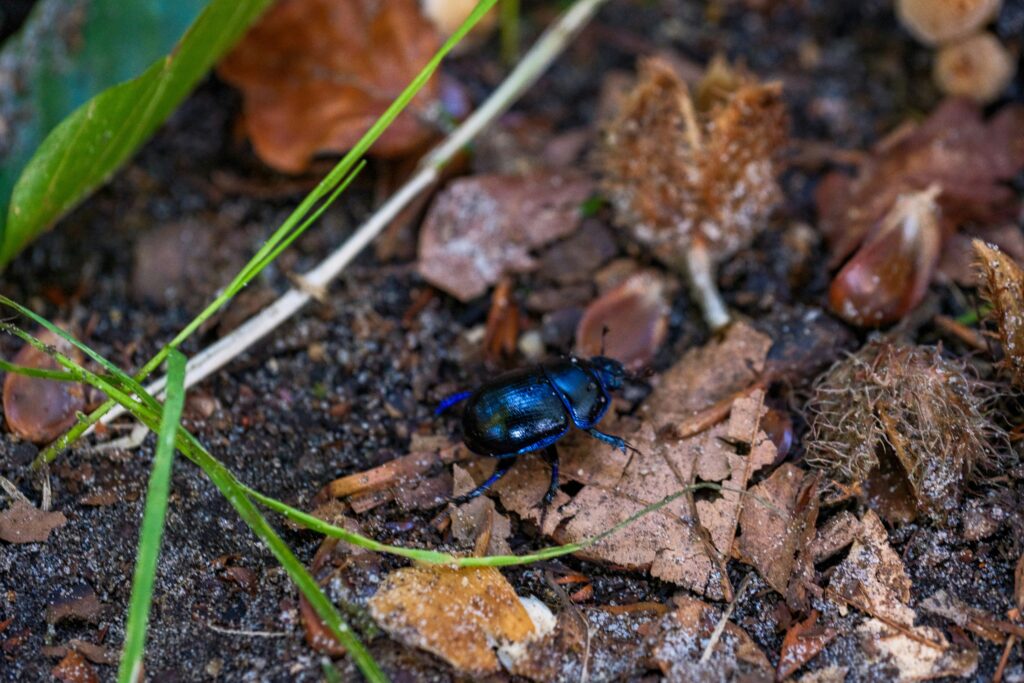
The decline of dung beetle populations in many regions threatens to remove a critical ecological control on disease transmission, potentially contributing to increased disease outbreaks. Many dung beetle species face population declines due to habitat loss, changes in livestock management practices, and particularly the widespread use of veterinary parasiticides that leave residues toxic to beetles in livestock dung. These population reductions create a concerning feedback loop: fewer beetles lead to more dung accumulation, which increases disease vector breeding sites, ultimately resulting in higher disease pressure that farmers may attempt to address with even more chemical treatments harmful to beetles. This pattern exemplifies the broader relationship between biodiversity loss and disease emergence documented by ecologists. Conservation efforts targeting dung beetles can therefore be understood as public health interventions, maintaining natural disease regulation services that benefit both humans and wildlife. Several countries have now implemented restrictions on certain veterinary products particularly harmful to dung beetles, recognizing their importance to agricultural sustainability and public health.
Geographical Variations in Disease Prevention Services

The disease prevention benefits provided by dung beetles vary considerably across different geographical regions and ecosystems, influenced by factors including beetle species composition, climate, and livestock management practices. In tropical regions, where higher temperatures would otherwise accelerate pathogen proliferation in dung, the extremely efficient dung removal by diverse beetle communities provides particularly valuable disease suppression services. By contrast, in temperate regions with seasonal cold periods that naturally reduce pathogen activity, the disease prevention role of dung beetles becomes most critical during warmer months. Island ecosystems often show the most dramatic examples of the beetles’ importance, with studies in Australia documenting severe fly problems and increased livestock disease following European cattle introduction before appropriate dung beetle species were established. Regional differences in dung beetle communities also influence their effectiveness against specific pathogens, with some beetle assemblages more efficient at suppressing certain disease organisms than others. Understanding these geographical variations helps prioritize dung beetle conservation in regions where their disease prevention services are most critical.
Quantifying the Economic Impact of Disease Prevention

The economic value of disease prevention services provided by dung beetles represents a significant but often overlooked ecosystem service. Economic analyses in Australia, where dung beetles were deliberately introduced to manage European cattle dung, have estimated annual benefits exceeding $380 million AUD, largely from reduced livestock parasitism and fly control. In the United States, researchers have calculated that dung beetles save the cattle industry approximately $380 million annually through parasite reduction alone, not including additional savings from reduced fly control costs. These economic assessments typically combine direct factors like reduced veterinary treatments and livestock productivity losses with indirect benefits such as decreased human illness from zoonotic pathogens and improved recreational land value. When these figures are extrapolated globally, the economic value of disease prevention by dung beetles likely amounts to billions of dollars annually. These economic dimensions help translate the beetles’ ecological functions into terms that can influence agricultural policy and conservation funding decisions.
Conservation and Management for Disease Control
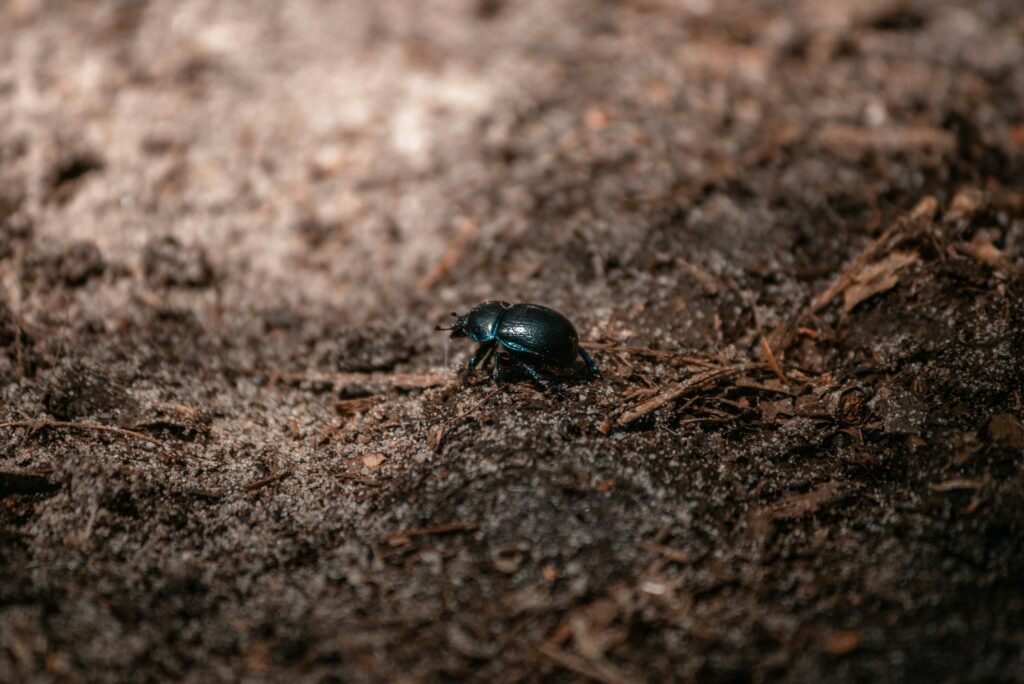
Maintaining robust dung beetle populations for disease control requires deliberate conservation and management approaches, particularly in agricultural landscapes. The most significant management change involves reducing use of veterinary parasiticides that leave residues toxic to beetles, particularly macrocyclic lactones like ivermectin which can remain lethal to beetles in dung for weeks after treatment. Rotational grazing systems that prevent continuous dung accumulation in any single area help maintain better pasture hygiene while supporting beetle populations. Some progressive farmers now deliberately introduce or augment dung beetle populations in their pastures, using techniques such as beetle tunnels or managed releases to establish effective communities. Maintaining vegetative diversity in pasture systems and preserving nearby natural habitats creates refuge areas that support more diverse beetle assemblages. Research institutions in several countries have developed specific management guidelines for farmers wanting to harness dung beetles for natural disease control, emphasizing integrated approaches that maintain these beneficial insects while achieving livestock health goals through less harmful interventions.
Future Research Directions and Challenges

While considerable evidence supports dung beetles’ role in disease prevention, significant research questions remain that could enhance our ability to leverage these insects for public health. A priority research area involves better quantifying the relationship between specific beetle species or functional groups and their effectiveness against particular pathogens, enabling more targeted conservation approaches. The potential for dung beetles to reduce antimicrobial resistance spread represents an especially urgent research front, given the global health implications of this growing threat. Climate change presents both research challenges and practical concerns, as shifting temperatures and precipitation patterns will alter both dung beetle distribution and pathogen dynamics in complex ways that require predictive modeling. Technological innovations such as remote sensing to monitor dung removal rates or genetic approaches to understand the beetle gut microbiome’s role in pathogen suppression offer exciting new research avenues. Perhaps most importantly, interdisciplinary collaboration between entomologists, veterinarians, public health experts, and agricultural scientists will be essential to fully understand and optimize the disease prevention services these remarkable insects provide.
Conclusion
The ecological services provided by dung beetles extend far beyond their role as nature’s recyclers—they function as a critical frontline defense against numerous diseases affecting humans, livestock, and wildlife. Through their efficient dung processing, these insects break parasite life cycles, reduce vector populations, prevent water contamination, and mitigate the spread of various pathogens including bacteria, parasites, and potentially viruses. As we face increasing challenges from emerging infectious diseases and antimicrobial resistance, the humble dung beetle represents a powerful ally in maintaining ecological barriers against disease transmission. Conservation efforts that protect these beetles not only preserve biodiversity but constitute legitimate public health interventions that support human wellbeing. By understanding, valuing, and protecting dung beetles, we embrace a One Health approach that recognizes the inextricable connections between environmental, animal, and human health—with these small but mighty insects serving as unexpected heroes in the global effort to prevent disease outbreaks.

